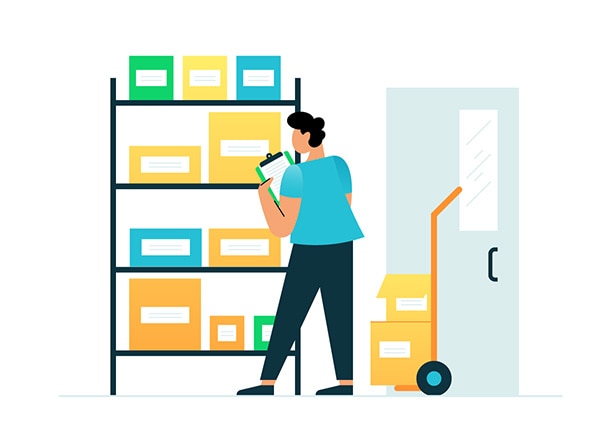Types of bills of materials
Aside from the engineering BOM and manufacturing BOM covered in the previous section, there are several other types of bills of materials used by businesses.
Configurable bill of materials (CBOM): This bill of materials is used for products that are configured to meet a customer’s specifications. While the basic product structure already exists, CBOMs allow for additional customizations and include all multiple variations, additions, or packaging options available for the product.
Sales bill of materials (SBOM): A sales bill of materials focuses on finished products that need to be assembled and packaged before they’re shipped to the customer. For example, the chairs in a dining table set, or the earbuds in a pair of wireless headphones. In a sales BOM, the finished product and its components are listed as separate items.
Service bill of materials: While BOMs are typically used in manufacturing, a service BOM is applied to services related to the product. It includes all components, as well as the installation steps and repair instructions needed to provide on-site services to customers.
Assembly bill of materials: Like the sales BOM, an assembly BOM lists the finished products to be assembled as a sales item. The components within the product, however, are not listed as separate or sub-items.
Structure of bills of materials: A BOM can be created using two different structures: a single-level bill of materials or a multi-level bill of materials.
Single-level bill of materials: A single-level BOM has the simplest structure, and it essentially lists all the components and the required quantities of each component used in production.
However, a single-level BOM doesn’t indicate the relationships between the components. It can be challenging to determine the cause or pinpoint the exact component to replace if an error occurs.
Multi-level bill of materials: Multi-level BOMs, or indented BOMs, show the relationship between components and their sub-components. The structure starts with the finished product and then lists down all the components used to make that product.
This makes multi-level BOMs especially useful for complex products with several components to be assembled or manufactured in-house.
What to include in your bill of materials
A bill of materials should include everything required to manufacture a final product. Referring to a BOM alone, someone should already know all the components, materials, resources, and steps needed throughout the entire development process. Specifically, the standard template for a BOM should include:
- BOM level or hierarchy: BOMs are often formatted according to levels or hierarchy, with the finished product at the top and individual components toward the bottom. Assigning components to their relevant hierarchy provides clear organization and understanding, especially for more complex products.
- Part number: Assign a unique number for every listed item to easily identify it throughout production.
- Part name: Include a straightforward and unique name for every item to easily identify it throughout production.
- Part description: Include a brief description for every item, noting anything that distinguishes it from other items.
- Phase: Record the current phase of each item (i.e., in design, in production, purchased, released). This helps track any bottlenecks, especially if producing a newly developed product.
- Quantity: Specify the number of each listed item in the final product to inform any necessary purchases.
- Unit of measure: Specify the measurement used for each item, maintaining consistency across similar types.
- Procurement type: Include how each item is purchased or produced (i.e., off-the-shelf, custom-made in-house).
- Price per unit: Include any known costs for each item.
- Reference designators: Include any special instructions that clarify how an item is assembled or used. For example, if a component is inserted into a circuit board, include a reference to where the component should go.
- Additional BOM notes: Note any additional information needed to explain the contents of the BOM better.












